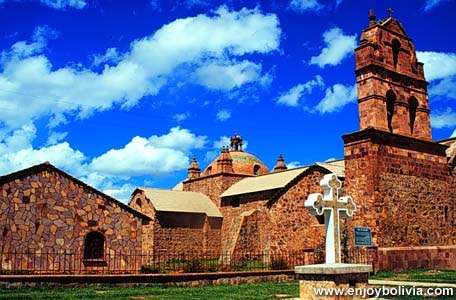About Bolivia
When studying a country in any
context, it is important to understand its basic structure. The best way to
analyze its structure is to break it down into the six basic categories of
political, economic, mass media, legal structure, and social structure. After
that is defined, I will discuss those implications in the field of International
Public Relations.
Political
In 1825, Bolivia got their independence from
Spain and is now a Republic. Interestingly enough, Bolivia has two capital
cities: La Paz and Sucre. There are three branches just like the US. There is
the Executive, Legislative, and Judicial. The government is based in the capital
city of Sucre. The Judicial branch is known for being very corrupt. There are
four major political parties, and there are votes for all elections. But, their
government is not very stable. There are revolts and demonstrations where many
lives have been lost. This type of political tension does not make for a stable
working environment because the government can completely change within one day.
The public has a varied opinion on many issues, and is not afraid to show and
fight for what they believe in. In most cases, those controversial issues should
be avoided in campaigns that are trying to reach a more universal audience.
Economic
Bolivia is one of the least developed and
poorest countries in all of Latin America. Their GDP in 2002 was only $7.9
billion. However, since the 1990s there has been a lot of improvement. However,
the country is very dependent on foreign aid, especially on the United States.
This implies that the United States and Bolivia have a really strong and
positive relationship. This also implies that Bolivia does not have the money to
spend on major expensive campaigns. Things must be done within a budget. Their
major industries are petroleum, mining, tobacco, and agriculture. Their main
agricultural products are soybeans, coffee, and coca. Since there is a lot of
agriculture there might not be as much technology like computers and telephones
in the more rural parts. They do most of their trade within the South American
region with countries like Brazil, Argentina, Chile and Peru. However, they also
trade with Japan, China and the United States. Bolivia relies on the United
States and other countries for trading. This is very important to consider in
public communications because Bolivia is a country that needs to maintain a
favorable image in the eyes of those they trade with or their economy will
suffer.

Mass Media
Overall, 87.2% of the general population (males
and females over the age of 15) can read and write. Newspapers are a giant
source of information. The main ones are el Diario and the Bolivian Times. Most
of the newspapers are printed in Spanish, which means that there is a large
portion of people who may not be able to read them because there are three
official languages in Bolivia (Spanish, Quechua, and Aymara). Bolivia also has a
news agency and more than 50 television stations. There are also 9 different
internet providers with about 78,000 internet users. This means that there are
many different ways in Bolivia to get my message out.
Here is a view of the Andes Mountains
Infrastructure
Bolivia is not an industrially developed country
com
Legal and Social Structure
The laws are written, there was a constitution
written in 1967 and revised in 1994. There do not seem to be any laws
restricting communication. However, the government is not very stable so I would
suggest having a legal advisor just to be on the safe side.
The dominant
religion of Bolivia is Catholic (95%), and there are three main languages
(Spanish, Quecha and Aymara). This means that all promotional materials or any
other plan will have to cross the language barrier. However, because most of the
country is Catholic, religious ideas may be incorporated into campaigns. It is
something that people across the country can relate to.
pared to those around it
i
Lindsay Strug
May 2005
Prof. Zaharna
International Public
Relations
American University
n Latin America, but there are many technological capabilities in the
main cities. The areas that will be a problem are the more rural indigenous
sections of the Andes Mountains. The altitudes are very high and not all of the
areas have electricity, which is a major concern when using certain media tools.
It will be expensive to provide electricity to the rural areas in order to use
televisions. However, whenever work will be done in the city, there are reliable
sources of electricity.






